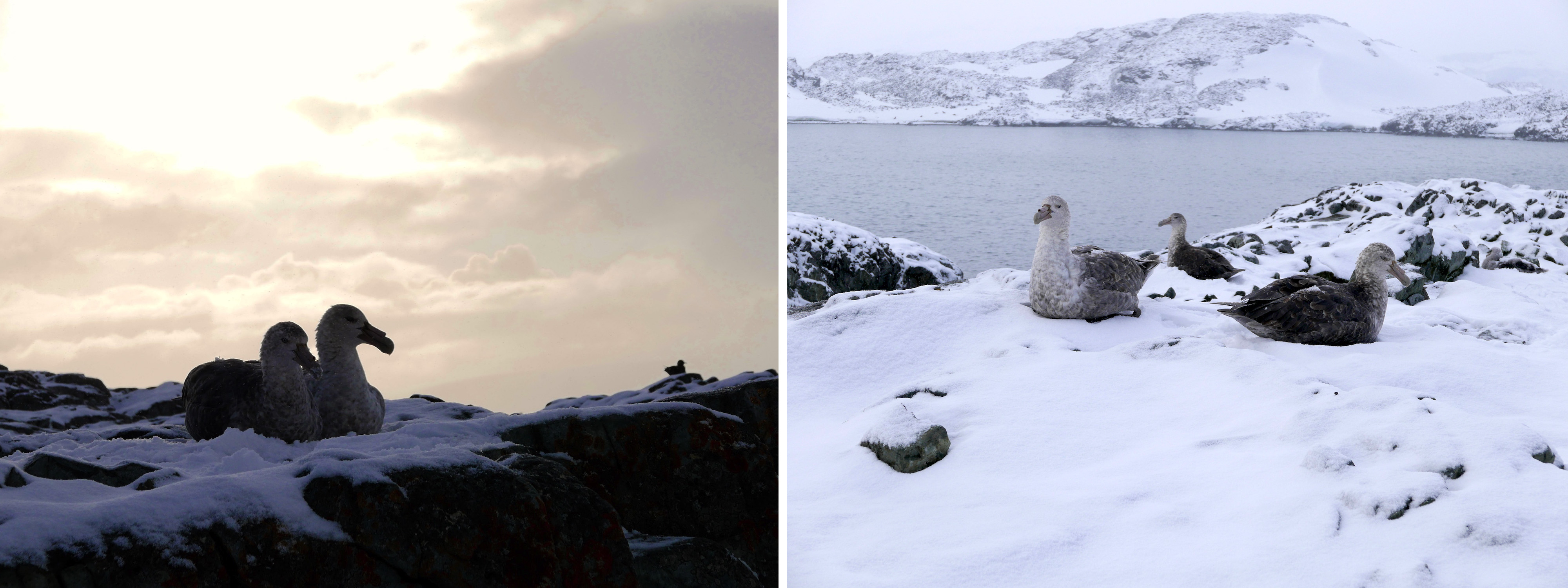Donna Patterson-Fraser and her giant petrel research:
Donna’s study is the only long-term study of southern giant petrels. As the bird name implies it is a large bird. In fact, it is the largest bird in Antarctica, with a 6-foot wingspan. She has studied these (relatively gentle) giants since 1991!

Giant petrels on Humble Island (about a mile from Palmer Station) have been equipped with transmitters that give information on how far they travel to search for food, where they go and how long it takes them to return to the nest. This is how we know they can travel over 1,000 kilometers during one foraging trip, which can last days!
Donna has been able to gain the trust of the giant petrels (nicknamed “jeeps”) on Humble Island. This allowed her to attach the valuable transmitters to the birds, from which she gains ecologically relevant information. She also monitors survivorship of the chicks, and how much the chick grows over the growing season.
Skuas eat penguin chicks, but surprisingly, do not attack giant petrel chicks. That is because chicks at a certain age, like the adults, can produce an oily substance that they can projectile vomit onto predators. This liquid damages feathers, thereby reducing the insulating properties of those feathers. Insulation is key in this cold environment. Thus, skuas will opt to steal and eat the egg of a giant petrel rather than face a petrel chick.
Humble Island is packed with giant petrel nests (see photo below with giant petrel tracks). It is a small, but stunningly beautiful island.
Donna, thank you for having me tag along yesterday!
